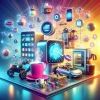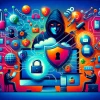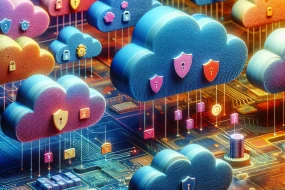
Imagine waking up to the smell of freshly brewed coffee, your thermostat adjusting to the perfect temperature, and your fridge reminding you to pick up some milk—all before you even step out of bed. This isn't a scene from a sci-fi movie; it's the Internet of Things (IoT) at work in our everyday lives. As these smart devices become more ingrained in our routines, their impact is profound, reshaping how we live, work, and play. In this article, we'll explore the real-world applications of IoT, from smart homes to healthcare, and delve into how this technology is making life easier, more efficient, and sometimes, just a little more fun.
Smart Homes: Where Convenience Meets Efficiency
Smart homes are perhaps the most visible manifestation of IoT in our daily lives. With devices like smart speakers, thermostats, security cameras, and even refrigerators, our homes are becoming more connected than ever. The beauty of a smart home lies in its ability to streamline everyday tasks. For instance, smart thermostats learn your schedule and preferences, adjusting temperatures to save energy while keeping you comfortable. Meanwhile, smart lighting systems can be programmed to mimic your presence, adding an extra layer of security when you're away. However, as convenient as these systems are, they do come with a learning curve. Many users find themselves overwhelmed by the sheer number of features and the complexity of setup. It's crucial to start small, perhaps with a single device, and gradually build your smart home ecosystem to avoid frustration.
Revolutionizing Healthcare with IoT
In the healthcare sector, IoT is proving to be a game-changer. From wearable devices that monitor vital signs to smart pills that track medication adherence, IoT is enhancing patient care and improving outcomes. Take, for example, wearable fitness trackers that not only count steps but also monitor heart rate and sleep patterns, providing valuable data to both users and healthcare providers. Hospitals are also leveraging IoT to improve operational efficiency. Smart beds can detect when they're occupied or unoccupied, reducing the need for manual checks and optimizing bed allocation. Yet, while the potential benefits are immense, there are significant challenges, particularly concerning data privacy and security. Ensuring that patient data is protected while being transmitted and stored is a top priority that healthcare providers must address.
IoT in the Workplace: Boosting Productivity and Safety
IoT is not just transforming homes and healthcare; it's also making waves in the workplace. Smart office solutions are enhancing productivity by automating mundane tasks and optimizing resource usage. For instance, IoT-enabled lighting and climate control systems can adjust based on occupancy and preference, creating a more comfortable work environment. Additionally, IoT can play a crucial role in workplace safety. In industries like manufacturing and construction, IoT devices can monitor machinery conditions and worker locations, preventing accidents and ensuring compliance with safety regulations. However, the integration of IoT in the workplace is not without its hurdles. The initial setup cost can be high, and there is often a steep learning curve for employees. Companies must invest in training and support to fully realize the benefits of IoT.
Transportation: Making Journeys Smarter
The transportation sector is another area where IoT is making a significant impact. Smart traffic management systems use IoT to monitor and control traffic flow, reducing congestion and improving commute times. Public transportation systems are also benefiting from IoT through real-time tracking and predictive maintenance of vehicles, leading to more reliable services. For individual travelers, IoT-enabled vehicles offer features like adaptive cruise control and real-time navigation updates, making driving safer and more efficient. However, as with other IoT applications, data security and privacy remain concerns. The vast amount of data generated by connected vehicles and infrastructure must be managed and protected to prevent misuse.
Common Pitfalls and How to Avoid Them
As with any technology, the adoption of IoT is not without its challenges. One common mistake is underestimating the importance of security. Many IoT devices have default passwords that users forget to change, making them vulnerable to hacking. It's essential to prioritize security by changing default settings and regularly updating device firmware. Another pitfall is overcomplicating your setup. With so many devices available, it's easy to go overboard and end up with a disjointed system. Start with a clear plan and gradually expand your IoT ecosystem to ensure compatibility and ease of use. Lastly, don't overlook the importance of data privacy. Understand what data your devices collect and how it's used, and take steps to protect your personal information.





























